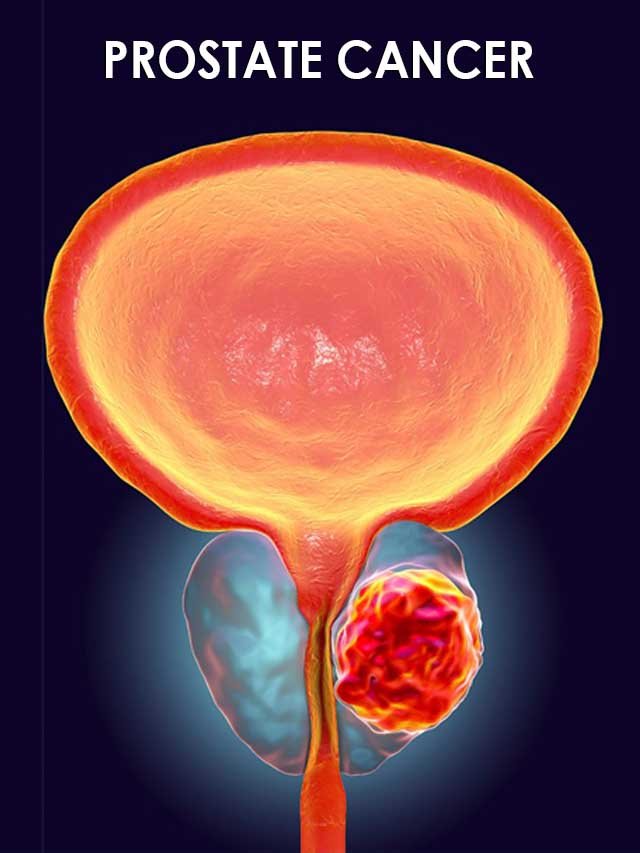HEALTH BLOG
Understanding Metastatic Prostate Cancer: A Comprehensive Guide
-
Rahul Priydarss

P
rostate cancer is a significant health concern and Metastatic prostate cancer occurs when cancer cells from the prostate gland spread to other parts of the body, posing a serious threat to a patient’s overall health
Table of Contents
Introduction:
Prostate cancer is a significant health concern among men, and when it reaches the metastatic stage, it presents unique challenges. Metastatic prostate cancer occurs when cancer cells from the prostate gland spread to other parts of the body, posing a serious threat to a patient’s overall health. In this comprehensive guide, we will delve into the various aspects of metastatic prostate cancer, including its causes, symptoms, diagnosis, and available treatment options.
Understanding Metastatic Prostate Cancer:
To comprehend metastatic prostate cancer, it’s crucial first to understand the basics of prostate cancer itself. The prostate is a small gland located beneath the bladder that is responsible for producing seminal fluid. Prostate cancer begins when cells in the prostate gland mutate and multiply uncontrollably, forming a tumour. While most cases are slow-growing and confined to the prostate, some cancers can become aggressive and spread beyond the gland.
Causes and Risk Factors:
Several factors contribute to the development of prostate cancer, and understanding these can aid in early detection and prevention. Age, family history, and ethnicity are significant risk factors. Men over the age of 50, those with a family history of prostate cancer, and African American men face a higher risk. Additionally, lifestyle factors such as diet, obesity, and exposure to certain environmental elements may play a role.
Symptoms of Metastatic Prostate Cancer:
Identifying the symptoms of metastatic prostate cancer is crucial for early intervention. Patients may experience bone pain, particularly in the spine, hips, or pelvis, as the cancer often metastasizes to the bones. Urinary problems, fatigue, unexplained weight loss, and weakness are common indicators. Regular check-ups and open communication with healthcare providers are essential for timely diagnosis.

Diagnosis:
Diagnosing metastatic prostate cancer involves a series of tests and procedures to determine the extent of the disease. This includes digital rectal exams, prostate-specific antigen (PSA) blood tests, imaging studies (such as bone scans and CT scans), and biopsy. Accurate diagnosis is paramount for tailoring an effective treatment plan based on the individual characteristics of the cancer.
Treatment Options:
Managing metastatic prostate cancer requires a comprehensive approach, considering the unique circumstances of each patient. and nowadays many treatment options are available for metastatic prostate cancer.
The primary treatment Methods:
- Hormone Therapy
- Chemotherapy
- Targeted Therapy
- Targeted Therapy
- Radiation Therapy
- Surgery
Here Proper Explanations-
- Hormone Therapy: Also known as androgen deprivation therapy, hormone therapy aims to reduce the levels of male hormones (androgens) that fuel the growth of prostate cancer cells. This can slow down the progression of metastatic prostate cancer and alleviate symptoms.
- Chemotherapy: In cases where hormone therapy is no longer effective, chemotherapy may be recommended. Chemotherapy uses drugs to kill or slow the growth of cancer cells throughout the body.
- Targeted Therapy: Targeted therapy focuses on specific molecules involved in cancer growth and progression. Drugs like enzalutamide and abiraterone acetate target pathways that are crucial for prostate cancer cell survival.
- Immunotherapy: Immunotherapy stimulates the body’s immune system to recognize and attack cancer cells. While still under investigation for prostate cancer, certain immunotherapies may be considered in certain cases.
- Radiation Therapy: Radiation therapy may be used to target specific areas where metastatic prostate cancer has spread, providing relief from symptoms and slowing the growth of tumours.
- Surgery: In some cases, surgery may be considered to remove the prostate or address complications such as urinary blockages.
Collaborative Care and Support:
Living with metastatic prostate cancer requires a multidisciplinary approach. Patients benefit from working closely with a team of healthcare professionals, including oncologists, urologists, radiologists, and support staff. Palliative care plays a crucial role in managing symptoms and improving the overall quality of life for patients and their families.
Regular check-ups, open communication with healthcare providers, and adherence to prescribed treatment plans are essential components of successful management. Additionally, support groups and counselling services can provide emotional support, helping patients navigate the challenges associated with metastatic prostate cancer.
Research and Advancements:
The landscape of prostate cancer treatment is continuously evolving, with ongoing research contributing to the development of new therapies and treatment strategies. Clinical trials offer opportunities for patients to access innovative treatments and contribute to advancements in the field.
Review:
Insightful Guide to Metastatic Prostate Cancer:
This article provides a comprehensive and easily understandable overview of metastatic prostate cancer. From its origins and risk factors to symptoms, diagnosis, and an in-depth exploration of treatment options, it’s a valuable resource for anyone seeking clarity on this complex condition.
Empowering Knowledge for Patients and Caregivers:
It is an empowering read for individuals facing metastatic prostate cancer and their caregivers. The article’s breakdown of the disease progression, treatment modalities, and emphasis on collaborative care equips readers with the essential knowledge to navigate their journey with confidence.
Stay Informed, Stay Empowered:
A well-structured guide shedding light on metastatic prostate cancer, offering not just information but empowerment. The article covers all aspects, from early signs to the latest advancements, making it a go-to resource for those seeking a deeper understanding of this challenging medical condition.

Frequently Asked Questions (FAQs):
Q- What is metastatic prostate cancer?
A- Metastatic prostate cancer is an advanced stage where cancer cells from the prostate gland spread to other parts of the body, forming new tumours. This guide explains the progression, symptoms, and treatment options.
Q- How is metastatic prostate cancer diagnosed?
A- The diagnosis involves various tests like digital rectal exams, PSA blood tests, imaging studies, and biopsy. Accurate diagnosis is crucial for tailoring an effective treatment plan based on individual cancer characteristics.
Q- What are the primary treatment options?
A- The article outlines several treatment modalities, including hormone therapy, chemotherapy, targeted therapy, immunotherapy, radiation therapy, and, in some cases, surgery. Understanding these options is key to informed decision-making.
Q- How can patients and caregivers collaborate in care?
A- Collaborative care is emphasised, involving a multidisciplinary healthcare team. The article explores the importance of regular check-ups, open communication, and the role of support groups in enhancing the overall quality of life for patients and their families.
-Remember, Always consult with healthcare professionals or Doctors for personalised advice related to medical conditions.
Conclusion:
Metastatic prostate cancer is a serious and complex condition that requires a comprehensive and individualized approach to treatment. Early detection, a thorough understanding of risk factors, and regular monitoring are crucial in managing this advanced stage of prostate cancer. With advancements in medical science, there is hope for improved outcomes and a better quality of life for individuals facing metastatic prostate cancer. By fostering collaboration between patients, healthcare providers, and researchers, we can continue to make strides in the fight against this challenging disease.
Previous Post





